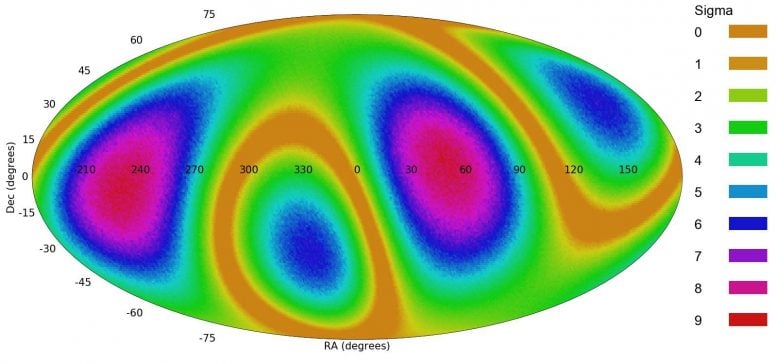
This image shows an all-sky mollweide map of the quadrupole in the distribution of galaxy spin directions. In this image, the different colors mean different statistical strength of having a cosmological quadrupole at different points in the sky. Credit: Kansas State University
Research reveals asymmetry in spin directions of galaxies and suggests the early universe could have been spinning.
An analysis of more than 200,000 spiral galaxies has revealed unexpected links between spin directions of galaxies, and the structure formed by these links might suggest that the early universe could have been spinning, according to a Kansas State University study.
Lior Shamir, a K-State computational astronomer and computer scientist, presented the findings at the 236th American Astronomical Society meeting in June 2020. The findings are significant because the observations conflict with some previous assumptions about the large-scale structure of the universe.
Since the time of Edwin Hubble, astronomers have believed that the universe is inflating with no particular direction and that the galaxies in it are distributed with no particular cosmological structure. But Shamir’s recent observations of geometrical patterns of more than 200,000 spiral galaxies suggest that the universe could have a defined structure and that the early universe could have been spinning. Patterns in the distribution of these galaxies suggest that spiral galaxies in different parts of the universe, separated by both space and time, are related through the directions toward which they spin, according to the study.
“Data science in astronomy has not just made astronomy research more cost-effective, but it also allows us to observe the universe in a completely different way,” said Shamir, also a K-State associate professor of computer science. “The geometrical pattern exhibited by the distribution of the spiral galaxies is clear, but can only be observed when analyzing a very large number of astronomical objects.”
A spiral galaxy is a unique astronomical object because its visual appearance depends on the observer’s perspective. For instance, a spiral galaxy that spins clockwise when observed from Earth, would seem to spin counterclockwise when the observer is located in the opposite side of that galaxy. If the universe is isotropic and has no particular structure — as previous astronomers have predicted — the number of galaxies that spin clockwise would be roughly equal to the number of galaxies that spin counterclockwise. Shamir used data from modern telescopes to show that this is not the case.
With traditional telescopes, counting galaxies in the universe is a daunting task. But modern robotic telescopes such as the Sloan Digital Sky Survey, or SDSS, and the Panoramic Survey Telescope and Rapid Response System, or Pan-STARRS, are able to image many millions of galaxies automatically as they survey the sky. Machine vision can then sort millions of galaxies by their spin direction far faster than any person or group of people.
When comparing the number of galaxies with different spin directions, the number of galaxies that spin clockwise is not equal to the number of galaxies that spin counterclockwise. The difference is small, just over 2%, but with the high number of galaxies, there is a probability of less than 1 to 4 billion to have such asymmetry by chance, according to Shamir’s research.
The patterns span over more than 4 billion light-years, but the asymmetry in that range is not uniform. The study found that the asymmetry gets higher when the galaxies are more distant from Earth, which shows that the early universe was more consistent and less chaotic than the current universe.
But the patterns do not just show that the universe is not symmetric, but also that the asymmetry changes in different parts of the universe, and the differences exhibit a unique pattern of multipoles.
“If the universe has an axis, it is not a simple single axis like a merry-go-round,” Shamir said. “It is a complex alignment of multiple axes that also have a certain drift.”
The concept of cosmological multipoles is not new. Previous space-based observatories — such as the Cosmic Background Explorer, or COBE, satellite; the Wilkinson Microwave Anisotropy Probe, or WMAP mission; and the Planck observatory — showed that the cosmic microwave background, which is electromagnetic radiation from the very early universe, also exhibits multiple poles. But the measurement of the cosmic microwave background is sensitive to foreground contamination — such as the obstruction of the Milky Way — and cannot show how these poles changed over time. The asymmetry between spin directions of spiral galaxies is a measurement that is not sensitive to obstruction. What can obstruct galaxies spinning in one direction in a certain field will necessarily also obstruct galaxies spinning in the opposite way.
“There is no error or contamination that could exhibit itself through such unique, complex and consistent patterns,” Shamir said. “We have two different sky surveys showing the exact same patterns, even when the galaxies are completely different. There is no error that can lead to that. This is the universe that we live in. This is our home.”

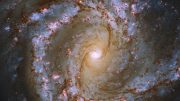

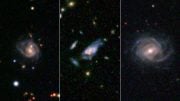
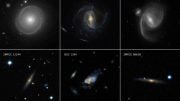
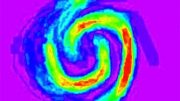
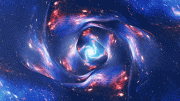
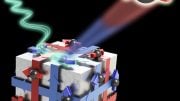
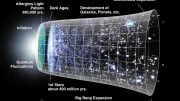
Excellent work. The findings re fully consistent with the cyclic cosmology of the Discrete Field Model (DFM) hypothesis of 2015, including a flow axis, Chirality bias, (e-) and helicity. The Model predicted a cyclic galaxy model deriving a full secular evolutionary sequence, repeated at the universe scale. So no ‘big bang’ but a pair of re-ionising jet flows. MNRAS rejected the paper as it looked to radical so it was published in the HJ, rather obscure and ignored. An update is in the works. The original is available on free access here; https://www.researchgate.net/publication/275970919_A_CYCLIC_MODEL_OF_GALAXY_EVOLUTION_WITH_BARS_Published_HJ_2014
I usually frown at self promotion, and that journal is really obscure – even Publons doesn’t like it.
And of course everyone claims consistency with this and that. Can you quantify it? And do your putative cosmology explain anything else than galaxies with bars? As far as I can see the paper is virtually empty, some handwaving of a proposal that goes against modern simulations of galaxy formation (as much as it is understood), and nothing on a spinning universe (which has no gravitationally cohesive virial radius like a gas cloud has).
This is a conference proceeding and a preprint, it has not passed peer review publication.
But in general, as the article say, the galactic plane obstruct galaxies along the sky map mid line and the typical pattern that show up due to the solar system velocity is a dipole centered where the spin direction map has it. So contrary to the claim here error and contamination are suspect. Since the spiral galaxy rotation is measured by small differences in Doppler shift, noise could easily obscure the result in some ways. That could explain why the asymmetry seems larger at more distant, less spectroscopically identifiable galaxies.
The analogous CMB quadrupole patterns are not statistically significant.
People read in all sorts of axis for that one without really defining it, in the Wikipedia article for “the Axis of Evil” it is claimed to be the orbital plane of our system, which is tilted 60 degree in respect to our orbit around the Milky Way disk so not related to any of that. (But, I think, more towards the center of the galaxy, where it is harder to make cosmological measurements.)
People also read in all sorts of explanations. In the paper the statistical significance is taken by looking at a cumulative binomial distribution of right/left rotation, not against a cosmological model that aggregates all the data. Those usually come out with “not statistically significant” as per above.
The current preprint paper show that the data pipeline was tested by hand and by flipping the radial intensity plots. But the filtering – removing 25 % of the sample by requiring 10 spectral peaks showing the same spin direction – is huge and is not analyzed for dust et cetera.
So I want to see a team have go at that, with more people looking into the possible systematic error sources here.
An extraordinary result of asymmetry needs extraordinary, repeated evidence. I don’t yet see that here.
[Links to references removed to not be hold up in moderation. Ask here if you want them.]
Hello again I thought I kinda said something like this or to check for this but in any case good work keep it up